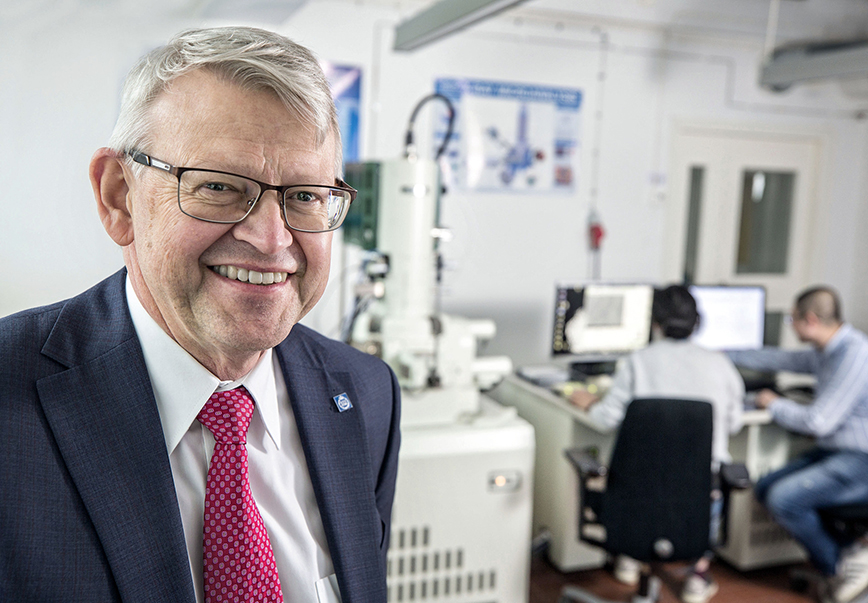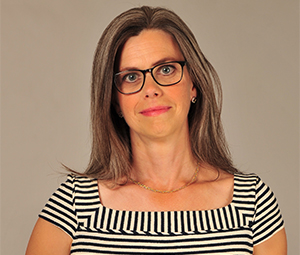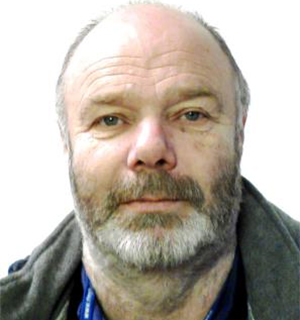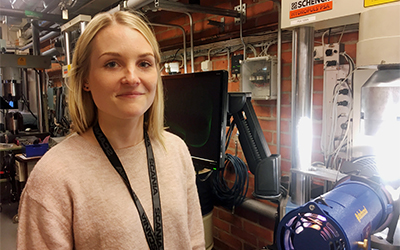“Collaboration skills ought to be more highly valued”

We would all benefit from more and varied exchanges between academia and the society around us and this would help drive societal development forwards. External engagement and collaboration ought therefore to be more highly valued.
These are the words of Mikael Östling, Deputy President and responsible for strategic collaboration at KTH. He notes that the university world can sometimes be a bit square when it comes to what is worthwhile. Collaborative competence, in the form of personal mobility should be worthwhile.
“Without cooperation, we will never get anywhere.”
Learning from others, exchanging knowledge and experiences with third parties around us, happen at several different levels. One ways is through the framework of the strategic partnerships KTH has with companies and organisations, another is via personal mobility. This can be as an industry-employed doctoral student, an adjunct or affiliate professor or the faculty.
“KTH has a long tradition of collaboration and it is in our DNA, so to speak. We enrich each other via these exchanges and it can open up a whole host of good opportunities at an individual level.”
Important know-how
Being more clearly grounded in reality can entail exciting new research questions, key know-how from the research departments of partner companies are just some of the benefits from a KTH perspective. On the other side of the fence, this can generate new findings for companies and organisations that they can take back with them or find new talents to recruit among KTH students and doctoral students.
There are over 300 industry-employed doctoral students from different companies and organisations at KTH today, and around 100 affiliate or adjunct professors.
“I would like to see twice that number to reap the benefits of welcoming many more people to KTH. This, in turn, can also lead to further mutual strategic exchanges that benefit all parties.”
Personal mobility away from KTH is on a far smaller scale and here, Östling feels there is far more to be done. One of many explanations is that this in particular is how external engagement and collaboration is valued. How to build merit rating based on your capacity to collaborate has been discussed in several places, such as within the MerSam project, whose overall aim has been to contribute to increased knowledge about academic merits in relation to external engagement and collaboration.
“As research and social challenges become ever more complex, collaborations and exchanges of this type become even more important,” says Östling.
Clearer feedback will make it even better
Susanna Lundgren is an expert in contact mechanics and turbine dynamics at Siemens Energy AB. However, she is also researching within this subject at the School of Engineering Sciences at KTH – as an affiliated faculty.
“It is a good way to expand university collaboration for the company I work for. It also increases my own level of expertise at the same time.”

How did you come up with the idea?
“I was involved in another research collaboration at KTH and thought it felt like an interesting opportunity. As we are affiliated, there is also increased access for collaborations and new discussions open up opportunities.”
How long have you been doing research at KTH?
“Four years, on a 20 percent part time basis. It is extended for two years at a time and before the pandemic I spent about one day every other week at KTH.”
How can your research be used?
“My goal is to produce supporting material to be able to develop our methods and criteria concerning contact fatigue. I acquire knowledge along the way that I can make use of in development work all the time.”
Is it something you would recommend to a colleague at Siemens Energy AB?
“Absolutely.”
Is there anything you miss?
“It was a bit unclear as to what KTH expected of me, that is to say, feedback on what I was supposed to bring to KTH could have been clearer. But I have had a fantastic relationship with a professor in the department so it works really well.”
More "ugly" research please
Pål Efsing, whose day job is at Ringhals Nuclear Power Plant, has been an adjunct professor at KTH for almost ten years.
“It is the best thing I’ve ever done. Being able to take a concrete problem and turn it into a research question to sound out with young talents or chew over with senior researchers is fantastic.”
Efsing spends roughly two days every other week sharing his expertise on how materials age, at the Solid Mechanics unit in the Department of Engineering Mechanics at KTH. His work is also supported by the Swedish Centre for Nuclear Technology, a research centre at KTH that aims to connect research interests between the nuclear power industry and authorities, and the universities that are active in this area.

Providing an industrial perspective is something that KTH and its students at all levels benefit from, he believes. Everyone involved gains tremendous added value. He also wants to beat the drum for what in some eyes is seen as “ugly research”.
“Upgrading applied research is also important. Some people think it is not as wonderful as mathematical models. This is something I have noticed. As KTH has a long tradition of applied research, I think this is a pity. But I have been made to feel really welcome and enjoyed an incredible response during my time here.”
If he were to offer a piece of advice, it would be to genuinely take the chance and make the most of this mutual exchange, both because it is good to bring in adjunct professors at a pretty early stage of their active careers so what they can explain about their particular industry is as up to date as possible.
---
Getting the best of both worlds
Having one foot in the world of business and the other in academia is something externally employed doctoral student Sara Eliasson can recommend.
“Absolutely. I get the best of both worlds. I can research and at the same time still keep my job at Scania.”

You are researching into a so-called future material, and more specifically fatigue in carbon fibre composites. How did you come up with the idea?
“In addition to their partnership, Scania and KTH also have a collaboration within the ECO2 Vehicle Design research centre where I was offered the chance to embark on a doctoral degree and study the subject in greater depth.”
What will the material be used for?
“In trucks, or battery-powered trucks where weight is a crucial issue, for example.”
How long have you been at KTH?
“Three years now and I hope to stay for five years so I can complete my doctorate. I spend approximately one day a week at Scania in Södertälje and the rest of my time at KTH - where I really feel a sense of involvement.”
Why becoming an industry-employed doctoral student ?
“Research and application are very closely related. The applicability of research becomes even clearer in this role. If you get the chance, I think you should take it.”
Jill Klackenberg